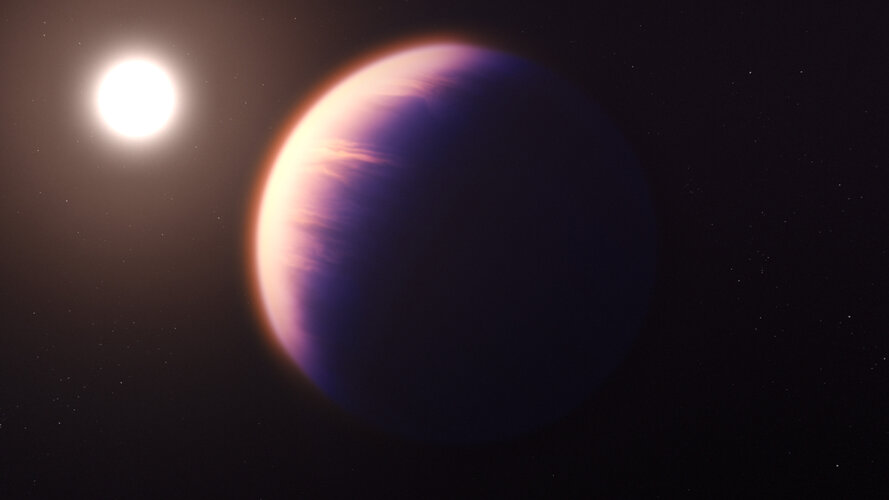ESA Navigation portfolio expanded and diversified by Ministerial Council
Friday, 25 November 2022 12:04
ESA’s Directorate of Navigation was pledged a total of €351 million by the Agency’s Member States during this week’s ESA Council at Ministerial Level on November 22 and 23. With this funding boost ESA sees its leading role in satellite navigation strengthened with a new programme FutureNAV, the continuation of its innovation programme NAVISP, and the kick-off of the Moonlight initiative for lunar telecommunications and navigation coverage.
Earth from Space: Zaragoza, Spain
Friday, 25 November 2022 08:00
The province of Zaragoza, in northeast Spain, is featured in this image captured by the Copernicus Sentinel-2 mission.
Commercialisation of space boosted at ESA Ministerial Council
Friday, 25 November 2022 06:40
23 Member and Associate States of the Agency pledged a total 117.6 million euros to ESA’s ScaleUp programme at ESA’s Ministerial Council CM22 to encourage entrepreneurship and commercialisation in the European space sector. This amount exceeds the target funding request by more than 17%, thus confirming the strong support that ESA Member States intend to provide to the development of a strong and sustainable commercial space ecosystem.
China's space-based observatory sends first solar image
Friday, 25 November 2022 06:03 China's solar exploration satellite has transmitted its first solar image since being sent to space in October, according to the Purple Mountain Observatory (PMO) based in east China's Jiangsu Province.
The Advanced Space-based Solar Observatory (ASO-S) - nicknamed Kuafu-1 in Chinese - sent hard X-ray imaging of solar flares that broke out at 1:00 a.m. (Universal Time) on Nov. 11, 2022, sa
China's solar exploration satellite has transmitted its first solar image since being sent to space in October, according to the Purple Mountain Observatory (PMO) based in east China's Jiangsu Province.
The Advanced Space-based Solar Observatory (ASO-S) - nicknamed Kuafu-1 in Chinese - sent hard X-ray imaging of solar flares that broke out at 1:00 a.m. (Universal Time) on Nov. 11, 2022, sa British Paralympian McFall 'inspired' to become astronaut candidate
Friday, 25 November 2022 06:03 John McFall, a British athlete who has competed in the Paralympic Games, has become the first disabled astronaut candidate with the European Space Agency.
McFall, 41, is among 17 new astronaut candidates selected by the ESA from a pool of more than 22,500 applicants from across Europe, the space agency said in a statement.
He was selected to take part in the ESA's Parastronaut Feasibility
John McFall, a British athlete who has competed in the Paralympic Games, has become the first disabled astronaut candidate with the European Space Agency.
McFall, 41, is among 17 new astronaut candidates selected by the ESA from a pool of more than 22,500 applicants from across Europe, the space agency said in a statement.
He was selected to take part in the ESA's Parastronaut Feasibility China lays out plan for future deep space exploration
Friday, 25 November 2022 06:03 China has made an ambitious road map for its future lunar exploration programs, including an international scientific outpost, according to the programs' chief planner. Wu Weiren, an academician of the Chinese Academy of Engineering, said that the next step in the country's lunar adventure - the Chang'e 6 robotic mission - has been set to land on the moon's far side and will collect and bring sa
China has made an ambitious road map for its future lunar exploration programs, including an international scientific outpost, according to the programs' chief planner. Wu Weiren, an academician of the Chinese Academy of Engineering, said that the next step in the country's lunar adventure - the Chang'e 6 robotic mission - has been set to land on the moon's far side and will collect and bring sa China to complete lunar outpost by 2028
Thursday, 24 November 2022 09:33 China will possibly complete the establishment of a lunar research outpost based on two robotic exploration missions by 2028 and send Chinese astronauts to the moon around 2030, according to the chief designer of China's lunar exploration program.
Wu Weiren, also an academician of the Chinese Academy of Engineering and the director of the country's deep-space exploration laboratory, said r
China will possibly complete the establishment of a lunar research outpost based on two robotic exploration missions by 2028 and send Chinese astronauts to the moon around 2030, according to the chief designer of China's lunar exploration program.
Wu Weiren, also an academician of the Chinese Academy of Engineering and the director of the country's deep-space exploration laboratory, said r Detected: sulfur compound created by photochemistry in exoplanet atmosphere
Thursday, 24 November 2022 09:33 JWST has captured the first-ever evidence of a compound in the atmosphere of an exoplanet-sulfur dioxide-created by a starlight-mediated chemical reaction. The discovery was announced by the mission's Exoplanet Community Early Release Science Team, which includes five Carnegie astronomers-Munazza Alam, Anjali Piette, Nicole Wallack, Peter Gao, and Johanna Teske-and published, along with other ob
JWST has captured the first-ever evidence of a compound in the atmosphere of an exoplanet-sulfur dioxide-created by a starlight-mediated chemical reaction. The discovery was announced by the mission's Exoplanet Community Early Release Science Team, which includes five Carnegie astronomers-Munazza Alam, Anjali Piette, Nicole Wallack, Peter Gao, and Johanna Teske-and published, along with other ob CAPSTONE forges new path for NASA's future Artemis lunar mission
Thursday, 24 November 2022 09:33 NASA's CAPSTONE spacecraft has completed final maneuvers to place it in its target orbit around the Moon, refining its path in the orbit it arrived to last week.
The spacecraft now is in the operational phase of its pathfinding mission, during which it will test an orbit key to future Artemis missions and demonstrate new technologies for spacecraft operating near the Moon.
"NASA's pa
NASA's CAPSTONE spacecraft has completed final maneuvers to place it in its target orbit around the Moon, refining its path in the orbit it arrived to last week.
The spacecraft now is in the operational phase of its pathfinding mission, during which it will test an orbit key to future Artemis missions and demonstrate new technologies for spacecraft operating near the Moon.
"NASA's pa NASA's Webb reveals an exoplanet atmosphere as never seen before
Thursday, 24 November 2022 09:33 NASA's James Webb Space Telescope just scored another first: a molecular and chemical profile of a distant world's skies.
While Webb and other space telescopes, including NASA's Hubble and Spitzer, previously have revealed isolated ingredients of this broiling planet's atmosphere, the new readings from Webb provide a full menu of atoms, molecules, and even signs of active chemistry and clo
NASA's James Webb Space Telescope just scored another first: a molecular and chemical profile of a distant world's skies.
While Webb and other space telescopes, including NASA's Hubble and Spitzer, previously have revealed isolated ingredients of this broiling planet's atmosphere, the new readings from Webb provide a full menu of atoms, molecules, and even signs of active chemistry and clo Reading the ripples at observation mountain
Thursday, 24 November 2022 09:33 After spending over 600 sols (days on Mars) exploring the diverse geologic environment of Jezero Crater, collecting drilled rock cores (and one atmospheric sample) along the way, Perseverance recently spent some time parked near a large sand ripple named "Observation Mountain," with sights set on something widespread yet unique. Regolith is the sandy, dusty, loose material covering much of the M
After spending over 600 sols (days on Mars) exploring the diverse geologic environment of Jezero Crater, collecting drilled rock cores (and one atmospheric sample) along the way, Perseverance recently spent some time parked near a large sand ripple named "Observation Mountain," with sights set on something widespread yet unique. Regolith is the sandy, dusty, loose material covering much of the M Cutting-edge experiments ride SpaceX's 26th CRS mission to space station
Thursday, 24 November 2022 07:49
SpaceX's 26th commercial resupply mission (CRS) is scheduled to launch to the International Space Station from NASA's Kennedy Space Center in Florida in late November. The Dragon spacecraft carries scientific experiments and technology demonstrations that explore growing plants in space, creating nutrients on-demand, in-space construction, and more.
Here are details on some of the research launching to the space station:
Big hopes for small tomatoes
A continuous source of nutritious food is essential for long-duration exploration missions, and the typical pre-packaged astronaut diet may need to be supplemented by fresh foods produced in space. Researchers have been testing a plant growth unit on station known as Veggie and have successfully grown a variety of leafy greens.
Webb reveals an exoplanet atmosphere as never seen before
Thursday, 24 November 2022 06:49
The NASA/ESA/CSA James Webb Space Telescope just scored another first: a molecular and chemical portrait of a distant world’s skies. While Webb and other space telescopes, including the NASA/ESA Hubble Space Telescope, have previously revealed isolated ingredients of this heated planet’s atmosphere, the new readings provide a full menu of atoms, molecules, and even signs of active chemistry and clouds. The latest data also give a hint of how these clouds might look up close: broken up rather than as a single, uniform blanket over the planet.
NASA temporarily loses communication with Orion spacecraft
Thursday, 24 November 2022 03:39 Communication between NASA's Mission Control Center in Houston and the Artemis I moon mission spacecraft was lost for 47 minutes Wednesday morning. It was resolved by a reconfiguration on the ground side, according to NASA.
NASA said in a blog statement that communication was lost temporarily while reconfiguring the communication link between the Orion spacecraft and Deep Space Network
Communication between NASA's Mission Control Center in Houston and the Artemis I moon mission spacecraft was lost for 47 minutes Wednesday morning. It was resolved by a reconfiguration on the ground side, according to NASA.
NASA said in a blog statement that communication was lost temporarily while reconfiguring the communication link between the Orion spacecraft and Deep Space Network 

